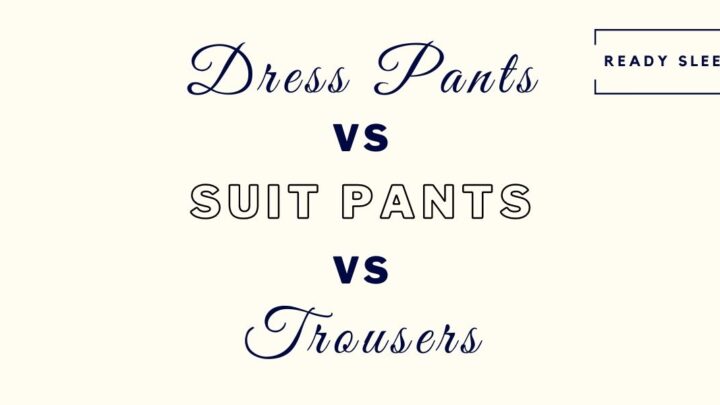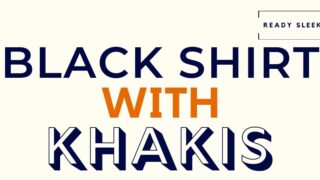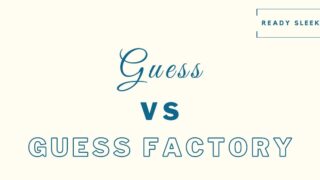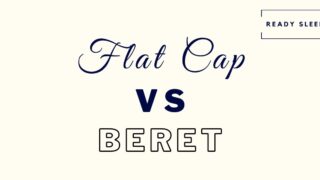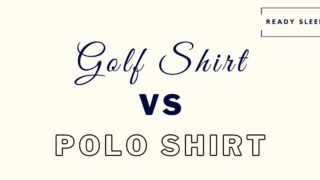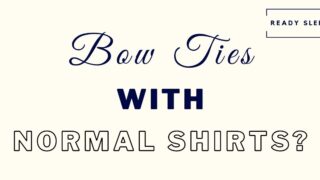Getting to grips with style terminology is important, but don’t let it grind you down or worse yet – confuse you. Three terms, in particular, are more guilty of this than most – “dress pants”, “suit pants”, and “trousers”.
So, what’s the difference between them all? Is there any?
Let’s clear up the confusion.
Dress Pants Vs Suit Pants: What’s The Difference?
Dress pants are usually made from a heavier fabric than suit pants and can therefore be combined with a variety of different items on the upper body. Suit pants have a lighter feel to them and are meant to be worn with a matching jacket.
While men can often be seen trying to make suit pants work without a suit jacket, the results are often at best underwhelming and at worst – comical.
The problem is simply that no matter how hard you try, a pair of suit pants simply won’t work on their own.

Image From 123RF
It can’t be combined with other items of upper body attire such as cardigans, sweaters, or even a dress shirt in the same way that dress pants can.
It’ll simply look odd without a suit jacket.
Dress pants and suit pants can both be considered “formal” and are often both made from wool or wool-synthetic blends.
They’ll also usually have more “formal” features such as jetted pockets, front creases, and perhaps even pleats.
However, the fabric of dress pants (a.k.a slacks) is usually heavier.
Here’s a pair of wool dress pants on

Because of its slightly heavier feel, it doesn’t look out of place when combined with other upper body items and without a matching jacket.
Suit pants are usually made from a lighter fabric that looks strange without a suit jacket to boot.
It’ll often look pretty obvious to people around you – even those that don’t have that keen of a fashion sense.
Both the jacket and the pants of a suit are usually made from the same piece of fabric. They’re meant to be worn together.
Although wool is a common fabric for suits (worsted wool being the most formal), it’s by no means the only fabric.
Cotton suits, linen suits, and polyester blends can all be found.
But again – the fabric of suits will usually have a lighter weight and feel to them than what you’d find with dress pants.
A Quick Word On Spezzato
I wanted to mention spezzato style or “suit separates” to round things off.
Although suits are generally meant to be worn with a matching pair of pants and a jacket, mixing and matching suits is possible and a common trend among fashion-forward gentlemen.
It isn’t as easy as it sounds, however.
Mixing the jacket of one suit with the pants of any other suit will not work most of the time. The mixing is an art in itself.
As a general rule, mixing solids with solids won’t be a good idea – for example, a navy blue suit jacket with a grey pair of suit pants.
9 times out of 10 it’ll look pretty out of place.
But mixing solids with patterns often works pretty well. For example, that same grey pair of suit pants with the dark blue windowpane jacket from a different suit could potentially look great.
To sum this all up, it’s possible to wear a pair of suit pants without its matching jacket. But you’ll still need a suit jacket of some sort – even if it’s from a different suit.
A pair of dress pants, on the other hand, is heavy enough to be worn without a matching jacket and can be combined with a variety of different items up top – ranging from casual to formal.
Dress Pants Vs Suit Pants: How To Choose?
Suit pants are suitable for formal events or business professional settings as they’re worn as part of a full suit. Dress pants are more versatile and can also be worn in smart-casual and business-casual settings, combined with upper body items such as cardigans, sports coats, and even T-shirts.
It all comes down to the fact that suit pants need to be worn as part of a full suit, whereas dress pants can be worn with a wide range of other stuff up top.
Let’s talk through the two main factors to consider when choosing between the two: the dress code, and the other items you’re hoping to wear.
Dress code
Considering suit pants need to be worn as part of a full suit, the number of appropriate events is more limited.
You’re pretty limited to formal events where a suit would be welcome, or for work settings where a suit forms a normal part of the dress code.
You’re probably not going to be wearing a full suit to your cousin’s birthday dinner or a first date.
Dress pants, on the other hand, may be entirely appropriate here.
They’re great for settings where a pair of chinos or jeans would be too casual, but a full suit would be too formal.
Smart-casual and business-casual dress codes are pretty ideal.
The fabric of dress pants (often wool, but also cotton, rayon, or polyester blends) is usually heavy enough to be mixed with a number of casual items on the upper body.
This makes dress pants a lot more versatile than suit pants when it comes to dress codes.
Other Items
Let’s say you aren’t sure of the dress code, but you have a pretty good idea of what else you want to wear that day.
If you’re hoping to wear a corduroy jacket with a henley shirt, a pair of suit pants is out of the question. You need that suit jacket to go with it.
But a pair of dress pants may still work. They may not be as casual as the upper body items, but they shouldn’t look too formal to be out of place.
Bear in mind that dress pants are still “formal” and so combining them with a tank top is going to be impossible.
But a fitted, tucked-in polo shirt, for example? Yep – should be fine.
One way of making dress pants look more casual is to cuff the hems and to pair them with smart-casual shoes such as penny loafers.
Dress Pants Vs Trousers: What’s The Difference?
“Trousers” (a.k.a pants) is a generic term used to refer to any item of clothing worn from the waist to the ankles and covering each leg separately. “Dress pants” is a term specifically referring to trousers with formal features.
It’s a common source of confusion, usually caused by not knowing that “trousers” is simply another term used for “pants”.
Geography accounts for most of the problem – the term “pants” is often used in the United States, while “trousers” is used in the United Kingdom.
Overall, what you really need to know is that “trousers” can refer to lots of different items – including suit pants, chinos, jeans, cargo pants, and technically even sweatpants.
“Dress pants” should be considered a form of trousers, considering they cover the body from the waist down to the ankles and also cover each leg separately.
But dress pants are trousers (i.e pants) with a distinctly formal edge to them. They’ll usually be made from wool or wool-synthetic blends or cotton.
Polyester blends are common too – here’s a pair of polyester dress pants on

They may have creases down the front and perhaps even pleats. The pockets will usually be jetted.
You won’t find the more “casual”, jeans-y features such as patch pockets and metal buttons on a pair of dress pants.
Dress pants can be combined with a wide range of items up top, but you’d struggle to combine them with the more “casual” items such as hoodies without looking out of place.
To sum that up, “trousers” is an umbrella term that actually includes dress pants.
Other Types Of Trousers
Here are some types of trousers (i.e pants) other than dress pants. It’s by no means a complete list of trousers – that could go on forever.
But this should give you a flavor of just how varied “trousers” can be.
Suit Pants
Suit pants are a type of formal trousers that come with a matching jacket.
There isn’t much else to say about this other than they meet the very broad criteria for being labeled a pair of “trousers”.
They cover the waist down to the ankles and cover each leg separately.
They’re trousers.
Chinos
The ultimate business casual pair of pants.
Made from the cotton twill chino cloth, chinos or “khakis” have a more rugged and casual feel to them than dress pants and suit pants do.
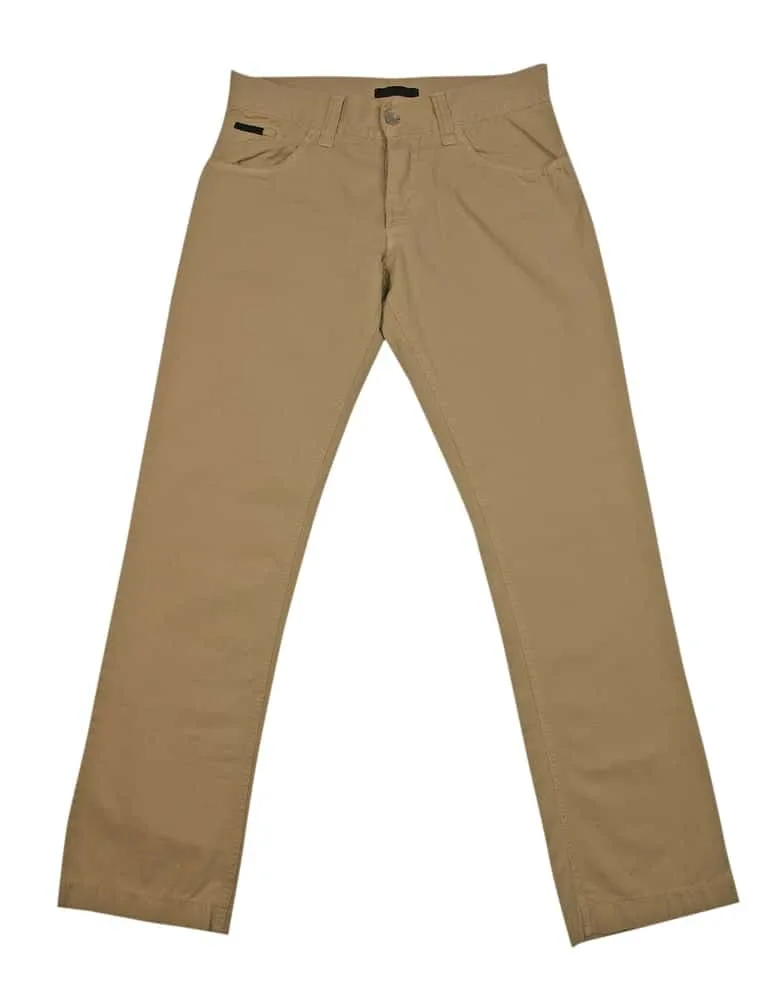
DepositPhotos
They aren’t quite as casual-looking as jeans, but they’re still casual enough to be considered incredibly versatile.
They’re ideal for smart-casual and business-casual settings – dates, dinners, conferences, etc.
Chinos are often combined with items such as T-shirts, OCBD shirts, sweaters, cardigans, blazers, and sports coats.
Jeans
Jeans are one of the most globally popular types of trousers in existence. They’re made from denim cloth and are a staple of casual attire.
The incredibly rugged and durable feel adds to its casual aesthetic, as do the prominent seam details, metal buttons, and patch pockets.
They’re really only suitable for casual and (possibly) smart-casual dress codes.
Jeans are worlds apart from dress pants, despite both falling under the umbrella term “trousers”.
Cargo Pants
Just to give you an even better idea of just how broad the term “trousers” can be, cargo pants are also a form of trousers.
They’re known for their baggy fit, numerous patch pockets, and large belt loops.
They ooze functionality and are a staple of modern workwear.
Corduroy Pants
A great smart-casual/business casual pair of trousers made from a rugged fustian fabric.
While they aren’t quite as popular as they were back in the 70s, they still crop up and have an appealing retro edge to them.
Conclusion
There you have it.
Hopefully, that clears up any confusion you may have had regarding the differences between “dress pants”, “suit pants”, and “trousers”.
While knowing the terminology isn’t essential to having a good sense of fashion, it definitely helps you put together a wardrobe.
Plus, it helps you communicate effectively with tailors.
Take this information and run with it. Enjoy.
Ready Sleek founder. Obsessed with casual style and the minimalist approach to building a highly functional wardrobe. Also a fan of classic, vintage hairstyles.

